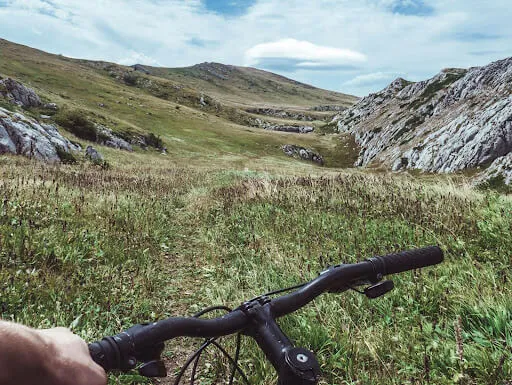
Cycling for Fitness: How to Improve Your Stamina and Strength
Admin
April 24, 2025
773 words
4 minutes
Cycling for fitness is an excellent way to improve stamina and build strength. Whether you’re a beginner or an experienced rider, combining effective training routines, proper nutrition, and smart recovery strategies can help you maximize your cycling performance.
Building Stamina with Effective Cycling Workouts
Improving your stamina starts with consistent training. Focus on longer, steady-paced rides to build endurance. Start with moderate distances and gradually increase your ride duration each week. Incorporating interval training can also enhance your cardiovascular fitness. By alternating between high-intensity sprints and slower recovery periods, you push your body to adapt and improve your stamina.
For instance, interval sessions during coastal rides along Portugal’s Silver Coast are an excellent way to develop endurance while enjoying breathtaking views. The flat yet lengthy trails provide the ideal terrain for sustained efforts.
Strength Training for Cyclists
Building strength is essential for powering through climbs and improving overall performance. Strength exercises like squats, lunges, and deadlifts can target key cycling muscles, particularly your quads, hamstrings, and glutes. Additionally, incorporating resistance training twice a week can enhance the power output of the bike.
Hill training is another practical way to build cycling strength. Climbing routes such as those found in the Douro Valley region provide natural resistance that challenges your muscles while improving endurance.
Nutrition for Energy and Recovery
Proper nutrition plays a vital role in fueling your rides and supporting recovery. Before your ride, consume a mix of complex carbohydrates and lean protein to provide sustained energy. Oats, whole-grain bread, and bananas are excellent choices. During your ride, energy gels, fruit, or electrolyte drinks can help maintain your energy levels.
Post-ride nutrition is just as important. Consuming a combination of protein and carbohydrates within 30 minutes of finishing your ride helps repair muscles and replenish glycogen stores. Hydration is equally crucial—always carry enough water to avoid fatigue and dehydration.
Smart Recovery Strategies
Rest and recovery are key to improving cycling performance. Plan rest days to allow your body to adapt and rebuild. Active recovery rides at a gentle pace can also help reduce muscle soreness and improve circulation.
Stretching and foam rolling after each ride can reduce stiffness, while quality sleep supports muscle repair and energy restoration.
Creating a Balanced Training Plan
A well-structured training plan should include a mix of endurance rides, strength workouts, and recovery periods. For beginners, aim for three rides a week with increasing intensity. More advanced cyclists can add interval training, hill sprints, and longer rides to challenge their stamina and strength.
Portugal’s diverse cycling routes offer the perfect training environment, from gentle coastal paths to more demanding mountain climbs.
Tracking Your Progress
Cycling Apps and Devices
There are numerous ways to monitor your cycling progress and maintain motivation. Utilizing a cycling app or GPS device is a popular and effective method. These tools allow you to track key metrics such as distance covered, speed, average pace, elevation gain, calories burned, and even heart rate if you have a compatible heart rate monitor. By keeping a record of these metrics, you can see how you’re improving over time and identify areas where you might need to focus more attention.
Set Goals
Setting achievable goals is another crucial aspect of staying motivated. These goals can be based on various metrics, such as distance (e.g., completing a 50 km ride), time (e.g., cycling for 2 hours), speed (e.g., improving your average pace by 5%), or even frequency (e.g., cycling 4 times a week). It’s important to start with smaller, more manageable goals and gradually increase the difficulty as you get fitter and stronger.
Besides using apps and setting goals, there are other ways to monitor your progress and stay motivated. Keeping a training log or journal can be a great way to track your workouts, note how you feel, and reflect on your progress. Joining a cycling club or group can also provide a sense of community and support, as well as opportunities to challenge yourself and learn from others.
Remember, consistency is key when it comes to improving your cycling performance. By monitoring your progress, setting achievable goals, and staying motivated, you’ll be well on your way to achieving your cycling aspirations.
Stay Consistent and Enjoy the Ride
Improving cycling stamina and strength is a gradual process. Stay consistent with your training, listen to your body, and make adjustments as needed. By maintaining a balanced approach to workouts, nutrition, and recovery, you’ll steadily build endurance and strength for better cycling performance.
For those looking to explore new routes while improving their fitness, guided bike tours in Portugal provide an excellent opportunity to combine training with stunning scenery. From the Silver Coast to the Douro Valley, Portugal’s diverse routes cater to riders of all fitness levels.

